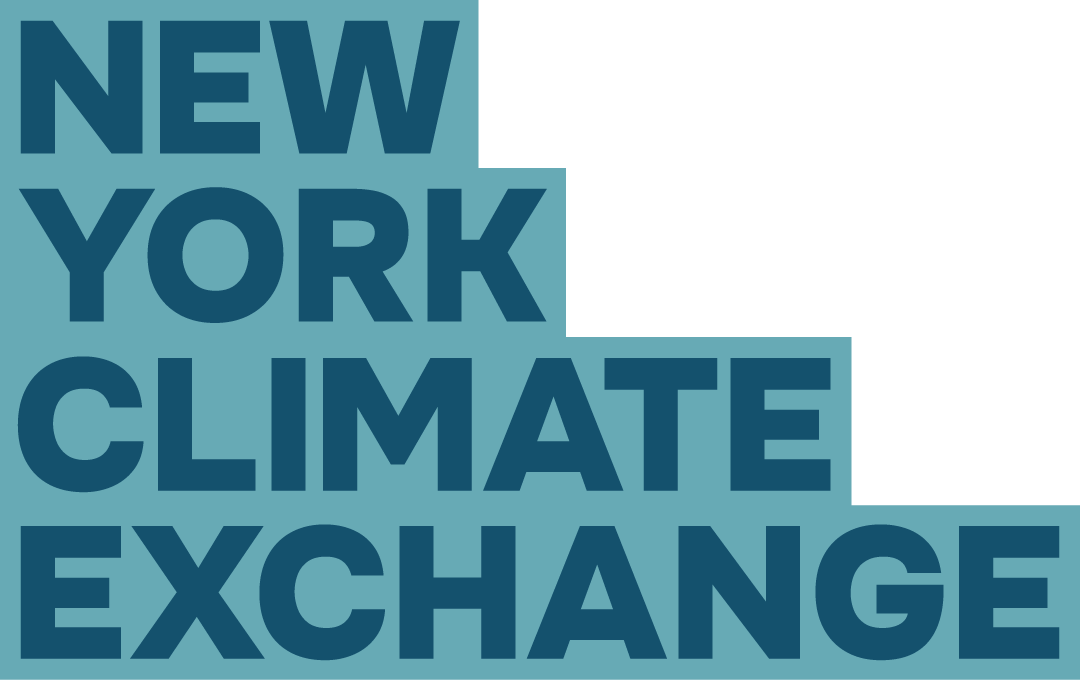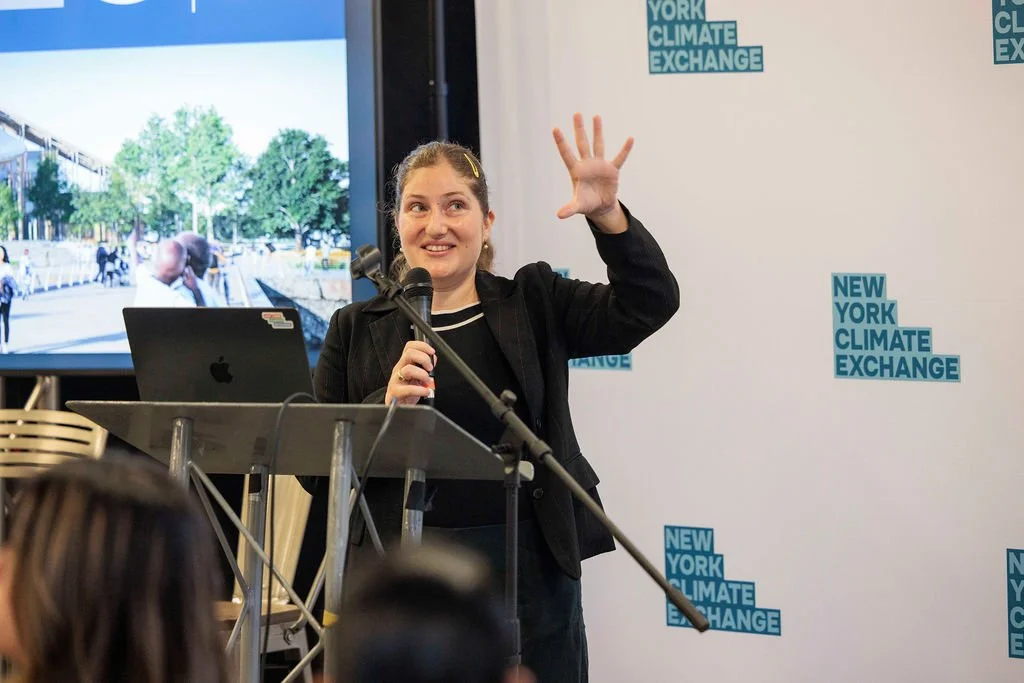Meet the Team: Elifmina Mizrahi, Capital Project Manager
This month’s “Meet the Team” spotlight features Elifmina Mizrahi, Capital Project Manager at The New York Climate Exchange. Elifmina brings a background in urban planning, investment banking, and climate tech to her role supporting the planning, design, and development of the Exchange’s new campus on Governors Island.
What does your role as Capital Project Manager at The Exchange entail?
I work on the team leading the design, development, and construction of our future home on Governors Island. My role bridges the work of our architects, engineers, and construction partners with the needs of our internal Exchange team—helping ensure the campus we’re building supports the full vision of our programs. I love serving as a translator between these two brilliant groups and contributing to a project that will soon take shape as a physical space for climate solutions.
What’s one project you’re especially excited about right now? Why does it matter?
One of the most exciting things we’re working on is identifying cutting-edge technologies, materials, and innovations to incorporate into our campus—either as small-scale demonstrations or full-scale integrations. Through our Sustainable Solutions Challenge, we received over 100 applications from around the world—half from right here in NYC—and reviewed them with a panel of expert reviewers, many of whom come from our partner institutions.
This challenge is important because innovation in the built environment often moves slowly, due to necessary safety codes and regulations. By serving as a first customer and proof of concept, we can help promising climate technologies overcome barriers to adoption and scale. From energy systems to recycled materials and climate-resilient landscape design, we’re casting a wide net to ensure our campus reflects the future of sustainable urban development. Finalists were announced during Climate Week 2025.
What gives you hope about the future of climate action?
On a professional level, I’m hopeful about the growing momentum behind systemic investing—an approach that applies systems thinking to how we allocate capital. Rather than focusing on short-term gains or siloed impact metrics, this method addresses the root causes of our most urgent challenges by investing in long-term, transformational change. It’s encouraging to see institutions begin to shift away from narrow frameworks like negative screening and toward strategies that center equity, climate resilience, and interdependence.
On a personal level, becoming a mom has made me more hopeful than ever. Watching my toddler discover the world—his awe at birds in the sky, the ease with which he makes friends on the playground—reminds me how much love, curiosity, and joy this next generation brings. If we can nurture and protect that sense of wonder as they grow, I believe they’ll help lead us to a more empathetic and sustainable future.
Do you have a climate-related book you’d recommend?
A recent book I’d highly recommend—especially in audiobook format—is What If We Get It Right? by Ayana Elizabeth Johnson. The audiobook feels like an immersive podcast series, with each chapter featuring a conversation between Johnson and an expert from a different field. It’s a hopeful and energizing listen, even when the topics are daunting.
What I loved most is how Johnson reminds us that climate action isn’t confined to science or policy alone—it’s woven into art, fashion, finance, film, government, architecture, and more. Hearing from change makers across so many disciplines made the scope of climate solutions feel expansive and inclusive, not overwhelming. She also intersperses the interviews with poems and personal reflections, offering space to process the emotions these big topics stir up. It’s a beautiful, moving, and deeply motivating book that I recommend to everyone.
What’s one thing you do to live more sustainably?
While I’m always a bit skeptical of the term carbon footprint—a concept popularized by the oil and gas industry to shift responsibility from corporations to individuals—I still believe it’s important for each of us to live in ways that challenge extractive, wasteful systems. The current Western model of consumption, especially in the U.S., is simply unsustainable.
To push back against that, I try to live in ways that reflect how I grew up in Istanbul and how my parents still live in Turkey. I limit my use of air conditioning, relying instead on cold showers, lightweight clothing, and hydration to stay cool. I shop secondhand, especially for clothing—including for my toddler—and prioritize natural materials like cotton, wool, and linen. I take public transit whenever possible, use only natural cleaning products, and try to repair things instead of replacing them.
Which of The Exchange’s partners are you especially excited to work with?
I’m especially excited to be working with our partners who have long-standing roots on Governors Island—organizations like Earth Matter, GrowNYC, the Harbor School, and Billion Oyster Project. As an urban planner, I’m always mindful of the importance of not parachuting into a space where meaningful work is already happening. It’s incredibly exciting that The Exchange is joining an existing community of place-based organizations deeply committed to climate solutions. I look forward to learning from their experience and finding ways to grow our collective impact by working together.
What’s your favorite thing about Governors Island?
I love that Governors Island feels like a peaceful refuge from the city’s constant motion, yet it's still so easy to get to. From my home in Bed-Stuy, I can hop on the J train, ride it to the end, and then take a short ferry ride—just long enough for one or two songs. Suddenly, I’m on a car-free island filled with trees, art, and incredible public spaces. My favorite spot is Hammock Grove. If you haven’t been, try to find it next time you visit—but maybe keep it off social media so it can stay the hidden gem that it is? :)
Tell us a fun fact about you!
Over the past few years, I’ve been building a consistent writing practice by setting aside 30 minutes a day to write—uninterrupted—about whatever’s on my mind. I simply sit down, check the clock, and write until the time is up. It’s been a grounding way to process emotions, develop my narrative voice, and share personal reflections. You can read some of my writing at thirtyminutes.substack.com

